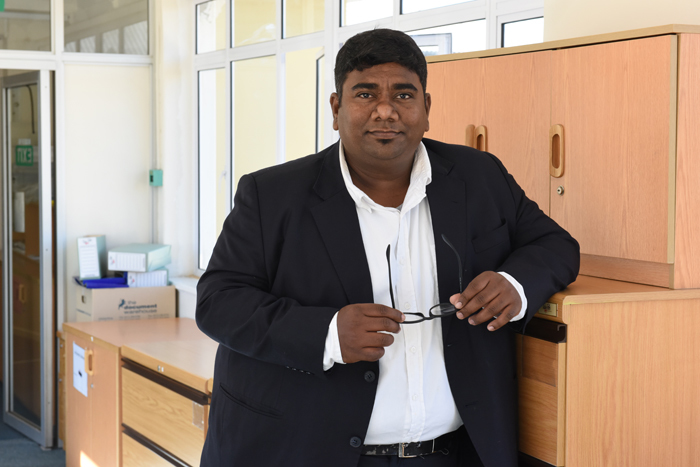Natural curiosity drives biomedical innovator
13 May 2016 | Story by Newsroom
Biomedical engineer Dr Sudesh Sivarasu is one of six UCT recipients of a 2016 Claude Leon Merit Award, which are awarded to develop their academic careers and research. Sivarasu, who draws inspiration from nature to design his patented medical devices, spoke with Helen Swingler.
HS: What attracted you to biomedical engineering?
SS: As a child in Vellore, India, I was fascinated by steam engines. My father was a train driver, so I got plenty of opportunity to see how they operate. After a terrible road accident, I missed a wonderful opportunity to do business studies in the UK. But this was a blessing in disguise. I did a postgrad degree in biomedical engineering. It was during my postgrad studies that I began to appreciate human anatomy and its design; the body is the most amazing, complex, interconnected and efficient machine. It led to further reading and understanding.
HS: Your academic career began in India and was cemented in South Africa?
SS: Yes. I studied electronics and instrumentation engineering – the equivalent of mechatronics – at the Vellore Institute of Technology (VIT). Both electrical and mechanical engineering design skills are essential to medical device design. After completing my PhD, I was at a crossroads: a lucrative corporate career or a career in academic research? At 26, I chose academia. As a young academic at VIT, I designed their undergrad and postgrad programmes in biomedical engineering. These are some of the most popular biomedical programmes in India. But I wanted to explore scenarios in global health. So, after a brief tenure at VIT, I got a lecturership in the Department of Human Biology at UCT in 2011. Here I've had a wonderful opportunity to set up clinician discussion platforms and explore the possibility of establishing an appropriate model for medical device innovation.
HS: How does the Claude Leon Merit Award support your research?
SS: It will be used for clinical trials and potential commercialisation of UCT-patented technology that underpins the novel Laxmeter device. This was recently granted patents in the US, UK and South Africa. The device helps measure laxity [or looseness] in all four major knee joint ligaments at various levels of flexion and at full extension. Ligamentous laxity is characterised by loose ligaments, which causes joint hypermobility and joint instability. Sports injuries often compromise ligamentous laxity. The capacity to measure multi-ligamentous laxity makes the Laxmeter unique.
HS: Is this kind of recognition important to an early career academic?
SS: It is essential. Nothing motivates you better than recognition for your hard work.
HS: Tell me about the Frugal Biodesign Process you conceptualised.
SS: It's a unique approach to medical device design and it is suited specifically to developing countries. I've incorporated this process into my medical device design course. Thus far, we've invented several medical devices and some are in clinical trials.
HS: What floats your boat as a researcher?
SS: Trusting that the work that I do will make a difference in someone's life. I want to serve humanity through my work.
HS: Does it reflect your personal interests?
SS: Yes. I'm naturally curious. I draw inspiration from nature − God's design, as I believe − and I'm keen to learn more about the dynamics of the human body. Understanding how disease affects the body leads to the design of new medical devices, which help people manage.
HS: What do you like doing when you're not designing novel devices?
SS: I'm a foodie, an animal lover and a movie buff. I love travelling and exploring new things. I like to do things differently, in unchartered territories.
Read more about Sivarasu and his work
Story Helen Swingler. Photo Michael Hammond.
Read more about all of the Claude Leon awardees
 This work is licensed under a Creative Commons Attribution-NoDerivatives 4.0 International License.
This work is licensed under a Creative Commons Attribution-NoDerivatives 4.0 International License.
Please view the republishing articles page for more information.










